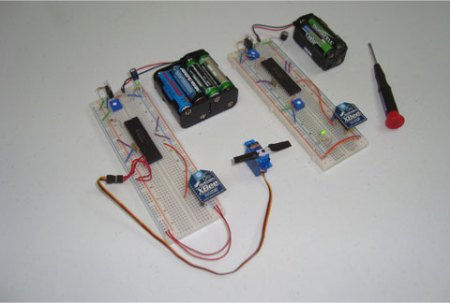Tweet Receiving, that is. This Ewok model, named “Ewen the Cheerlight,” is able to rotate its head left and right as well as show expressions. The most interesting feature of this hack, however, is that the little Ewok actually wakes up each time one tweets a “colour” to @cheerlights and lets it’s owner [Joel] know what he thinks of the “color” you’ve chosen. [Joel] insists that he’s like this featured on [HAD], although it remains to be seen if it will soon be turned off after the tweets start rolling in…
As far as how the device works, the head is turned with a simple hobby servo motor, and the expressions are shown on a LED matrix. The model itself is built from a polystyrene ball and an old table lamp. The build really looks awesome.
All of this is controlled by an Easy USB Interface Board which is listed on [Pozible], the Australian version of [Kickstarter]. Be sure to check out the video of “Ewen” in action after the break! Continue reading “A Little Tweeting “Ewok””





















